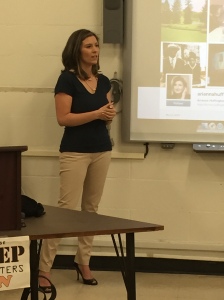Raising the minimum wage has become a nationwide debate. In California, cities like San Francisco and Oakland have already raised hourly wages. Los Angeles may not be far behind.
The current minimum wage in L.A. is $9 an hour. Earlier this year, Mayor Eric Garcetti said he plans to raise the minimum wage to $13.25 an hour by 2017.
But many activists, including the Los Angeles organizing committee for the Fight for $15 campaign, are asking lawmakers to boost the minimum wage to $15 an hour now.
This week, city lawmakers gathered to discuss raising the minimum wage.
“A key committee of Los Angeles lawmakers just unanimously approved a hotly contested plan to raise the citywide minimum wage to $15 by mid-2020,” according to Wednesday’s article by Emily Alpert Reyes for the Los Angeles Times. “Under the plan, small businesses and small nonprofits — those with 25 workers or fewer — would get an extra year to phase in the wage hikes, reaching the $15 mark by July 2021 instead of July 2020.”
Citizens and lawmakers in favor of the $15 an hour increase believe it will help the economy and give full-time employees opportunities to improve their quality of life. Those against the increase fear it will force businesses to go elsewhere.
California State University, Dominguez Hills students and staff, as well as Los Angeles community members gave their thoughts on the issue of raising the minimum wage.
Jacqueline Orellana is a digital media arts major. In addition to being a full-time student, she holds two jobs and an internship.
Orellana was recently hired for a position that pays $15 an hour as a live sound theater assistant at Ebony Repertory Theatre in Los Angeles. She still receives minimum wage for her work at the campus radio station KDHR.
“Having that increase, it makes living a little bit easier, a lot easier actually,” Orellana said about her new position. “I think the pay increase in Los Angeles will help a lot of people.”
While Orellana said raising the minimum wage is a good idea, she had some reservations about what that means for inflation.
Other concerns students and community members expressed were about the merit of the work minimum wage jobs require as well as what the hike will mean for small businesses.
Joe Ung owns Cassidy’s Corner Café in Lakewood. As a small business owner with four employees he said adapting to a higher minimum wage would be difficult.
Ung said he’s benefitted from working with employees from programs such as Pacific Gateway and South East Los Angeles County Youth Services.
“I think for small business owner, it’s really hard. It’s hard right now at $9 an hour,” Ung said. “What I think is good is grants and programs [that help pay wages for] student workers… I understand the need, but for small business owners it’s hard.”
